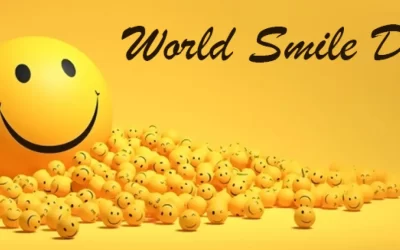LGBTQ representation in publishing has grown exponentially over the last decade in a good way. We noted in a previous post that LGBTQ books have gone from being a niche subject in the back of bookstores to bestsellers that are helping to keep publishing alive and thriving. The sales of books with LGBTQ characters and themes have grown 200% since 2019 during a time when sales of most fiction titles has shrunk. This combined with the growing number of people who identify as LGBTQ working in publishing companies and being authors has led to what should be a great boon for LGBTQ stories.

However, with every action, there is an equal but opposite reaction. And book challenges at libraries in the United States have dramatically risen. According to the American Library Association (ALA), 2023 saw a 65% increase in the number of unique book titles being challenged across the United States when compared to 2022. This is the highest number of individual challenges recorded by the ALA since they began documenting challenge statistics. In total, there were 1247 challenges to material in public libraries, school libraries, and university libraries. Among the book titles singled out for censorship, 47% featured LGBTQ characters with 7 of the top 10 most challenged books of 2023 featuring gay characters. These books are frequently targeted with complaints that the books contain “sexually explicit” and “age inappropriate” material with other groups going so far as to argue they are pornographic.
Many free speech groups have noted that these book challenges are usually not isolated instances and instead are part of a greater targeted campaign by fringe groups. One such group, Pen America, has coined this campaign the “Ed Scare.” The Ed Scare is described as “a nationwide effort to foment anger and anxiety about public education; to restrict or prohibit instruction about race, sexuality, and gender; and to ban books that address these topics.” And in public schools, this campaign seems to be working. In the 2022–23 school year, PEN America noted over 3000 instances of books being banned by public school libraries, which is an increase of over 30% from the previous school year. The majority of these bans have occurred in the states of Florida, Texas, Missouri, Utah, and Pennsylvania with over 40% of all public school book challenges coming from school districts in Florida.
While not all of these challenges were successful, many have been. This has resulted in these books being removed or restricted in libraries across the country. Most of these banned books are targeted at young adult and teen audiences and run the gamut of novels, memoirs, graphic novels, and even some free verse. In order to celebrate Pride Month, here is a brief overview of the 7 LGBTQ books that drew the greatest ire:
- Gender Queer by Maia Kobabe. Released in 2014, Gender Queer ranked as 2023’s most challenged individual title. The book is an autobiographical graphic novel about the author’s journey to discovering they are in fact non-binary and the reaction from their friends and family. The book was also the most challenged in 2021 and 2022 and went viral in late 2023 when Senator John Kennedy read some passages of the book on the Senate floor during a debate over book censorship.
- All Boys Aren’t Blue by George M. Johnson. Released in 2020, George M. Johnson’s “memoir-manifesto” includes a series of essays describing the author’s journey as a young queer black man growing up in New Jersey and Virginia. The book covers bullying, family bonding, and Johnson’s first sexual experiences. It’s the latter essays that have been the subject of most of the book’s censorship challenges.
- This Book is Gay by Juno Dawson. Written as a “manual to all areas of life as an LGBT person,” Juno Dawson’s 2014 nonfiction book is targeted at queer adolescents with the hope of helping young people navigate the rampant misinformation that can be found on the internet. The book has been frequently challenged due to its discussion of sex education including discussion of dating apps and oral and anal sex.
- The Perks of Being a Wallflower by Steph Chbosky. One of my personal favorite books, Stephen Chbosky’s coming-of-age epistolary novel depicts the trials and tribulations of Charlie, a high school wallflower who is navigating through his freshman year. While the main character Charlie is not a member of the LGBTQ community, one of Charlie’s friends is gay with the book discussing some of his sexual exploits. The book is challenged for this content along with discussion of rape, drugs, and suicide.
- Flamer by Mike Curato. Another graphic novel that sees frequent challenges, Mike Curato’s 2020 novel is set in 1995 at a Boy Scouts summer camp. It depicts the bullying of Aiden, a young closeted student, who is bullied for this stereotypically gay behavior. It is regularly challenged and banned for its “sexually explicit” content.
- Tricks by Ellen Hopkins. Written in free verse, this 2009 young adult novel focuses on five interlocking narratives of troubled teenagers. One of the characters is Seth, a young man struggling to identify his changing sexuality. The novel is frank in its discussion of the characters’ sexual activity and drug use leading to its many nationwide challenges.
- Let’s Talk About It by Erika Moen and Matthew Nolan. The final book featuring LGBT subject matter to make the ALA’s top 10 banned list is also the most recently released book on the list. The 2021 nonfiction graphic novel serves as an illustrated guide to sex education for teenagers. Do we really need to elaborate on why this one is challenged? It includes entire sections on sex for LGBTQ individuals along with discussion of fantasies, kinks, and images of various sexual positions.
Are there other books with LGBTQ characters and themes that you want to recommend to readers?
By: Chris Moffitt
Chris is a Managing Editor at Technica Editorial



